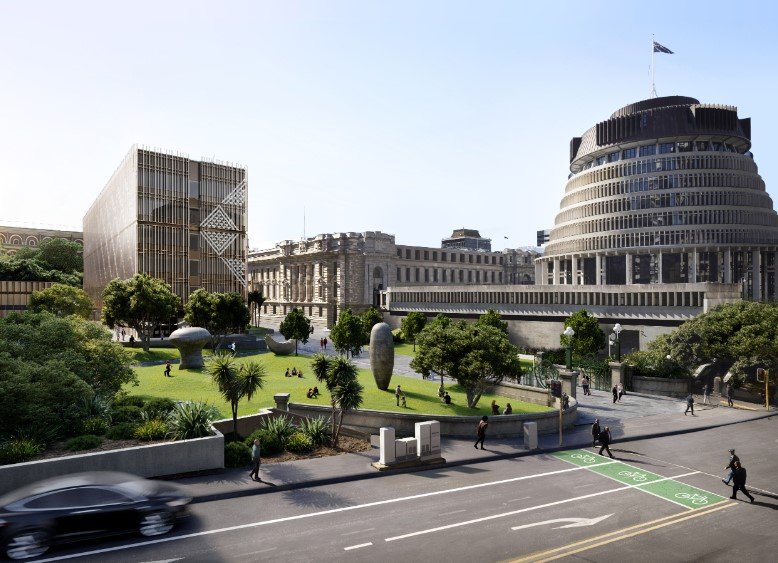With tax receipts falling and foreign investment getting a warm welcome, the government is pinning its hopes on growth. But will it be enough?
The New Zealand government has revealed a 2025 Budget that slashes taxes and invites investment — but also raises questions about how public services will be funded.
Most of the headline policies have one thing in common: they take money out of the Crown’s pocket and place it firmly in the hands of businesses, investors, and (to a lesser extent) workers. As Treasury coffers tighten, the plan seems clear — stimulate economic growth and hope it carries the fiscal load.
From Households to Boardrooms
Compared to the 2024 Budget, which leaned heavily into tax relief for households, this year’s fiscal statement has pivoted sharply toward business.
Only a few specific tax policies were outlined, but they point to one thing: making New Zealand a more attractive playground for foreign capital and local startups.
Two announcements stand out:
-
Ending the Digital Services Tax, which would’ve raised over NZ$100 million annually.
-
New incentives for startup employee share schemes, giving founders tools to retain top talent without upfront costs.
That’s a sizable shift. One year you’re helping families with food and fuel costs, the next you’re giving tech bros stock options.

Digital Tax Off the Table
Let’s talk about that scrapped Digital Services Tax (DST). Treasury expected it to bring in serious money — $100 million-plus per year.
Facing direct pressure from the United States, including threats of retaliatory tariffs, New Zealand backed off. The government says it’s prioritizing trade harmony over revenue streams, but it’s a tough pill to swallow.
Killing the DST means the likes of Google and Facebook — who profit handsomely off Kiwi users — won’t be asked to pay their “fair share” locally. And with GST already hitting ordinary consumers hard, that’s bound to feel lopsided to many.
$75 Million to Woo the World
In a bid to draw more capital across its borders, the government’s putting NZ$75 million over four years into promoting foreign investment.
It’s targeting infrastructure, especially — roads, rail, and renewable energy. These big-ticket projects need deep pockets, and ministers seem confident that overseas investors can provide them.
On paper, this could work. International capital funds could step in where tax cuts leave gaps. But the returns aren’t immediate — and they’re definitely not guaranteed.
The move is also framed as part of a strategy to make New Zealand a hub for high-growth startups. And part of that includes loosening rules and tax burdens around employee share schemes.
It’s all about making it easier to hire — and keep — skilled staff in a fiercely competitive global market.
But Where’s the Money Coming From?
Here’s where things get a bit hairy. You cut taxes, drop potential revenue streams like the DST, and boost spending in targeted areas like investment promotion. That leaves a hole.
Finance Minister Nicola Willis hasn’t offered a detailed roadmap for how public services — health, education, housing — will be maintained or expanded with falling revenue. There are hints of “efficiency savings” and “reprioritisations,” but no hard numbers yet.
And here’s a thing most people miss: tax cuts tend to be sticky. Once given, they’re politically very hard to reverse.
Business Confidence Is Up — For Now
Business groups have reacted warmly to the Budget. They see the cuts as pro-growth and long overdue. The New Zealand Initiative and BusinessNZ both praised the focus on investment and entrepreneurship.
But even some industry voices are quietly wondering how this all balances out. One senior partner at a top accounting firm described the Budget as “a roll of the dice.”
That’s not a phrase you want to hear when you’re talking national finances.
Let’s Look at the Ledger
Here’s a quick breakdown of the Budget’s major tax and revenue-related moves:
| Policy | Projected Annual Impact | Notes |
|---|---|---|
| Abolishment of Digital Services Tax | -NZ$100m+ | Dropped under U.S. pressure; loss of potential revenue |
| Startup employee share tax tweaks | -NZ$20m | Reduced upfront tax obligations |
| Foreign investment promotion fund | -NZ$18.75m/year | New expenditure over four years |
| Total known net revenue reduction | >NZ$120m | Conservative estimate |
That’s a big chunk missing from the balance sheet — and that’s not even factoring in other tax reliefs hinted at but not yet costed.
Election Politics on the Horizon
Let’s not pretend this Budget exists in a vacuum. With the next general election creeping closer, tax cuts are an easy political sell.
It’s classic campaign fuel: cut taxes, boost growth, stimulate jobs. But it’s also risky. Because if the growth doesn’t show up — or worse, if the economy slows — the government might find itself in a fiscal bind.
Worse still, public services could take the hit. Already under strain post-COVID, systems like public hospitals and schools could face deeper cuts if revenues don’t bounce back quickly.
Kiwis Want Answers
Among voters, reactions have been mixed. Some are cautiously optimistic. Others, especially those working in the public sector or relying on social services, are worried.
The concern is simple: will these tax cuts just widen inequality?
There’s also the issue of transparency. With many policies vaguely outlined and full costings missing, critics say the government is leaving too many questions unanswered.








